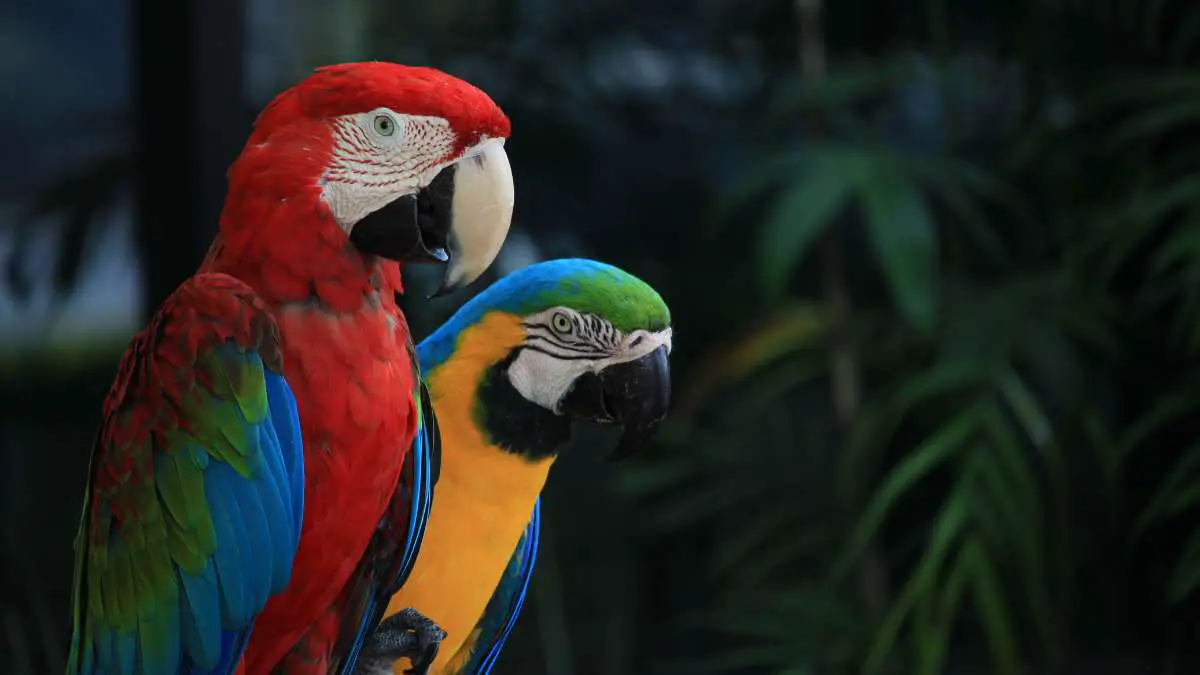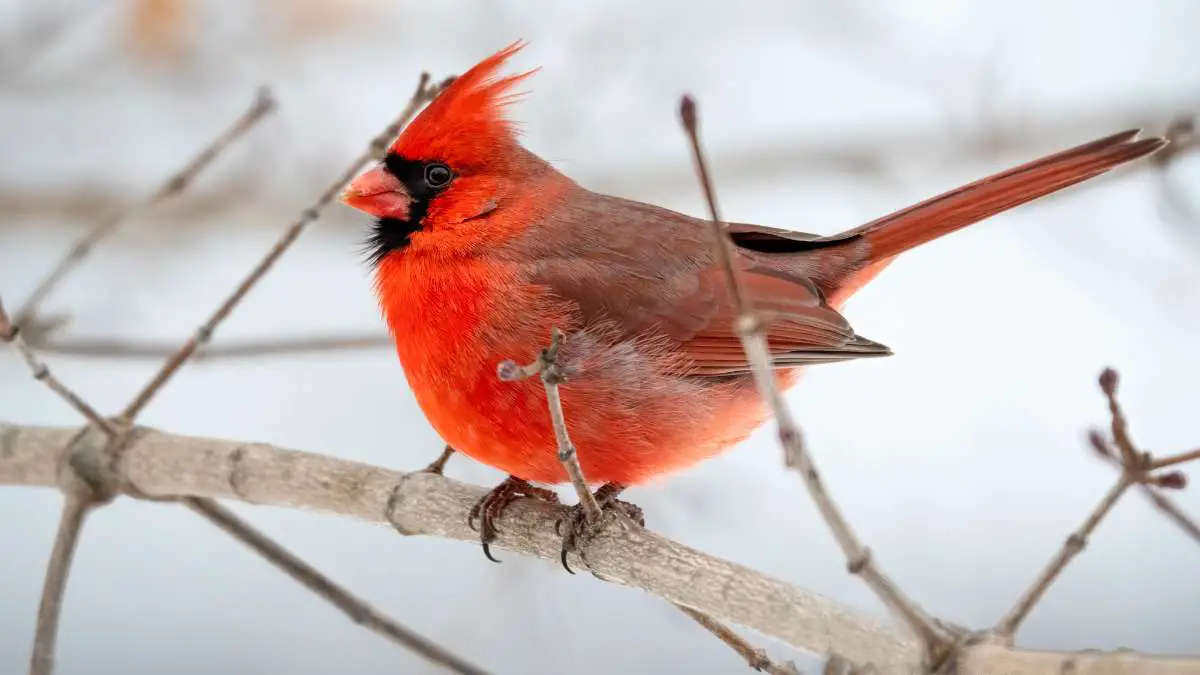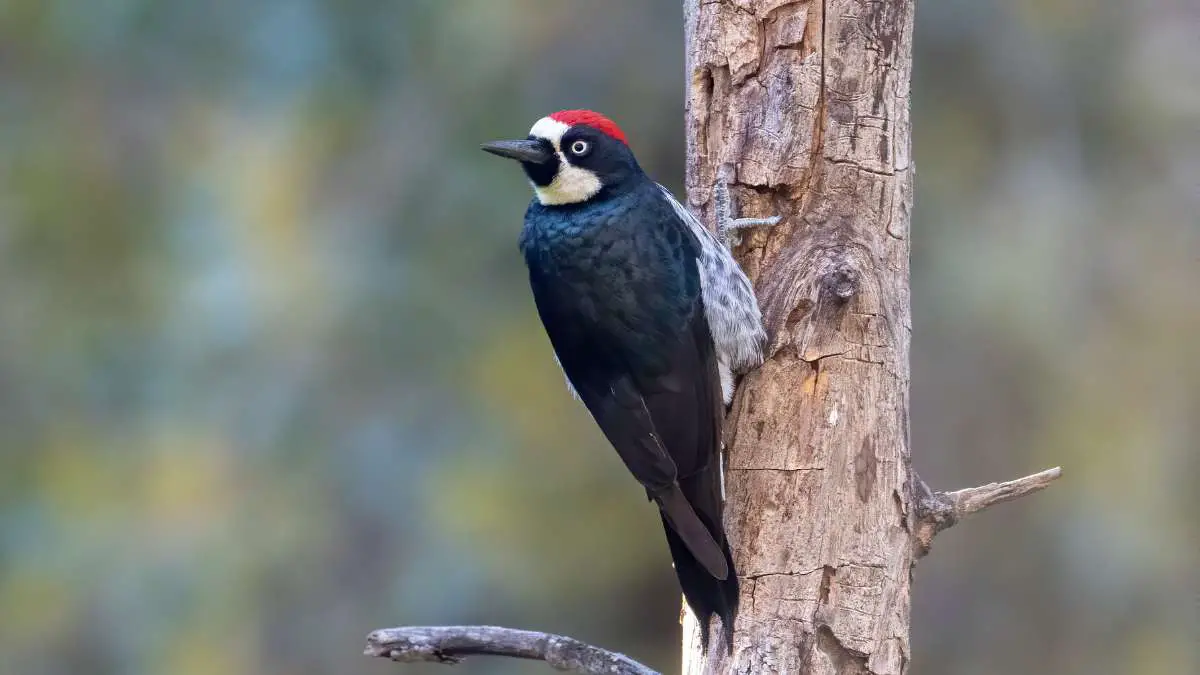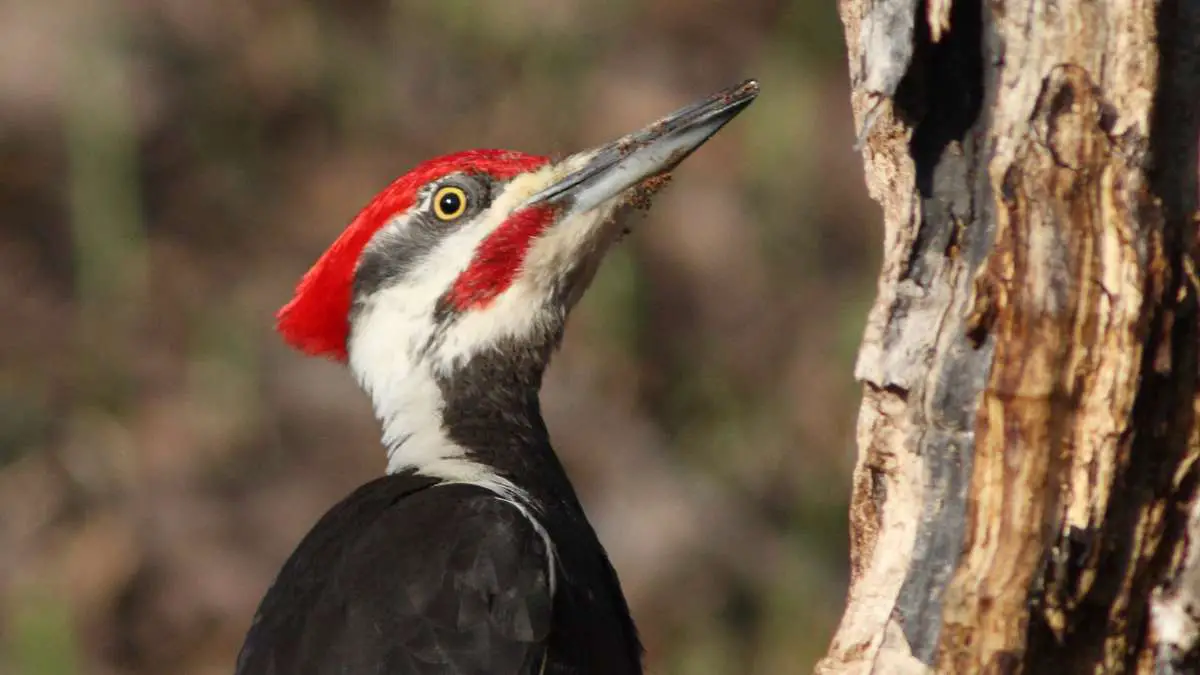Macaws, those vibrant and clever parrots, often attract us with their colorful plumage and playful antics. Now, diving into the depths of their love lives, the question arises: Do macaws mate for life?
Well, the answer isn’t a simple yes or no. While some macaw species do form strong, lifelong bonds with a single partner, others engage in what’s known as serial monogamy, changing mates over time.
These charming birds showcase a range of relationship dynamics, influenced by factors like their species, environment, and social interactions.
Understanding Macaw Species
From the Scarlet Macaw’s fiery feathers to the playful antics of the Blue and Gold Macaw, these birds never fail to captivate. But do macaws mate for life? Let’s dive into the intricacies of macaw species to find out.
Different Macaw Species:
Macaws, belonging to the parrot family, boast an impressive diversity. The Scarlet Macaw, known for its striking red, blue, and yellow plumage, stands out alongside the Blue and Gold Macaw, flaunting a vibrant mix of, well, blue and gold.
The Hyacinth Macaw, on the other hand, is the largest of them all, with a cobalt-blue hue that’s hard to miss. Each species has its distinct charm, making them a popular choice among bird enthusiasts.
Highlighting Behavioral Differences Among Species:
While these colorful creatures share similarities, they also exhibit distinct behavioral traits. Some macaw species, like the Scarlet Macaw, are known for their social nature, forming close-knit bonds with their mates.
On the flip side, the Hyacinth Macaw tends to be more independent. Observing these behavioral differences adds another layer to the fascinating world of macaws.
So, while the idea of macaws mating for life might hold true for some species, the diversity among them ensures there’s always something new to discover in the enchanting realm of these feathered companions.
Social Structure of Macaws
Ever wondered about the romantic escapades of our feathered friends, the macaws? Let’s look into the intriguing social structure of these vibrant birds to uncover whether they truly mate for life.
Discussion on Macaw Social Behavior in the Wild:
In the wild, macaws are not solo artists; they’re more like social butterflies. These birds thrive on companionship, forming tight-knit bonds with their fellow macaws.
The Scarlet Macaw, for instance, engages in lively communal activities, from foraging for food to navigating their colorful surroundings. This social behavior extends beyond mere survival – it’s a way of life.
Exploration of Flock Dynamics and Interactions:
Macaws, like any close-knit community, have their own set of social rules. Flock dynamics play a crucial role in their daily lives, with macaws often seen flying together, creating a mesmerizing spectacle in the sky.
Their interactions involve not just squawks and calls but also intricate displays of affection and cooperation.
While some macaw species exhibit a more monogamous tendency, forming strong pair bonds that might last a lifetime, others embrace a more fluid approach to relationships.
Reproductive Behavior
Overview of Macaw Mating Rituals:
When it comes to matters of the heart, macaws don’t hold back. Their mating rituals are a spectacle of color, sound, and intricate displays.
Picture this: the Scarlet Macaw engaging in a delightful dance, feathers ablaze with vibrant hues, or the Blue and Gold Macaw exchanging tender moments with its mate.
These rituals aren’t just for show; they play a crucial role in establishing and reinforcing pair bonds.
Explanation of Courtship Displays and Vocalizations:
Macaws are eloquent communicators of love, expressing their affection through a repertoire of courtship displays and vocalizations.
Courtship might involve synchronized movements, mutual preening, and even sharing a nibble or two.
Vocalizations, ranging from gentle murmurs to exuberant squawks, serve as a language of love. These expressive behaviors aren’t limited to a select few; they are an integral part of the macaw mating ritual across various species.
Lifelong Bonds in Macaw Mating
In the colorful realm of macaw mating, the concept of lifelong bonds takes center stage, inviting us to explore the intricacies of avian romance.
Examining the Concept of Monogamy in Macaws:
Many macaw species are avid proponents of monogamy, where a pair forms a lifelong bond with each other.
Take the Scarlet Macaw, for instance, recognized for its unwavering commitment to a single mate.
Such partnerships involve shared activities, from attractive courtship displays to collaborative parenting, showcasing a depth of connection that transcends the avian world.
Research Findings on Macaw Pair Bonding:
Scientific exploration into macaw relationships unveils fascinating insights. Research indicates that certain macaw species exhibit robust monogamous tendencies, underscoring the depth of emotional bonds formed within these feathered unions.
The Blue and Gold Macaw, known for its vibrant plumage, also shines as an example of devoted pair bonding.
Monogamy vs. Serial Monogamy
Distinguishing Between Lifelong Monogamous Pairs and Serial Monogamy:
While some macaw species embrace lifelong monogamous bonds, others opt for serial monogamy, where individuals form new pairs for each breeding season. The Green-winged Macaw exemplifies this pattern, engaging in new partnerships for successive breeding cycles.
Examples of Macaw Species Exhibiting Different Mating Patterns:
Macaws, being diverse in their habits, showcase various mating patterns. While the Hyacinth Macaw tends toward lifelong monogamy, the Yellow-collared Macaw demonstrates a more flexible approach, engaging in serial monogamous relationships.
Factors Influencing Pair Bonding
Discussion on Environmental Factors Impacting Macaw Mating Behavior:
Environmental factors, such as habitat and food availability, can influence macaw mating behavior. Adapting to their surroundings, macaws display remarkable flexibility in forming and maintaining pair bonds.
Insights into the Role of Socialization and Upbringing:
The early experiences of macaws play a pivotal role in shaping their mating behavior. Socialization and upbringing within a flock contribute to the development of social bonds, influencing how macaws approach relationships throughout their lives.
In summary, the world of macaw mating unfolds as a magnificent tapestry of monogamy and varied bonding patterns, reflecting the adaptability and complexity of these vibrant avian relationships.
Challenges to Lifelong Bonds
In the enchanting world of macaw relationships, the concept of lifelong bonds faces its share of challenges, unveiling a nuanced perspective on the resilience of these vibrant bird partnerships.
Exploration of Factors That May Disrupt Macaw Pair Bonds:
While macaws are known for their dedication to lifelong mates, various factors can disrupt these bonds.
Changes in environmental conditions, loss of habitat, and alterations in food availability can impact the delicate balance of macaw relationships. These challenges force these birds to adapt and sometimes reevaluate their pair bonds.
Human Interaction and Captivity Effects on Mating Behavior:
The influence of human interaction and captivity poses a unique set of challenges to macaw mating behavior. In captivity, macaws might face limited space and altered social dynamics, affecting their natural mating patterns.
Breeding programs and pet ownership can inadvertently introduce disruptions to the intricate dance of courtship and pair bonding.
Despite these challenges, macaws often showcase remarkable adaptability.
Some species, like the Blue-throated Macaw, demonstrate resilience in the face of environmental changes and captivity challenges.
Understanding and addressing these obstacles are crucial for both the well-being of these captivating birds and the preservation of the intricate dance of lifelong bonds in the colorful world of macaw mating.
Case Studies
Engage into the wonderful world of macaw relationships, let’s explore specific case studies that shed light on the remarkable phenomenon of lifelong bonds within these vibrant bird species.
Highlighting Specific Macaw Species Known for Lifelong Bonds:
Certain macaw species stand out for their steadfast commitment to lifelong bonds. The Scarlet Macaw, adorned in brilliant red, blue, and yellow feathers, is a notable example.
These birds engage in enduring partnerships, navigating the cheerful dance of courtship and shared parenting. The Hyacinth Macaw, with its majestic cobalt-blue plumage, also displays a penchant for forming strong, lifelong connections with a mate.
Real-Life Examples of Macaw Pairs Forming Strong Connections:
In the realm of macaw pair bonding, real-life examples provide superb insights. Take the Green-winged Macaw, known for forming enduring connections, often demonstrating a strong sense of loyalty.
Observing pairs like the Blue and Gold Macaw reaffirms the depth of emotional connection these birds share, emphasizing the concept of lifelong mates.
Conservation Implications
In the intricate world of macaw mating, understanding the implications for conservation becomes paramount, as the fate of these vibrant birds intertwines with their unique mating behavior.
Discussing the Impact of Mating Behavior on Macaw Conservation:
The mating behavior of macaws plays a pivotal role in their conservation. Species with strong monogamous tendencies, like the Scarlet Macaw, face unique challenges when disruptions occur in their pair bonds.
Human-induced factors such as deforestation, habitat loss, and illegal pet trade can pose significant threats to the stability of these avian relationships, impacting overall population health.
The Role of Preserving Natural Habitats for Sustaining Pair Bonds:
Conservation efforts take center stage in preserving the intricate dance of macaw pair bonds. Ensuring the protection and restoration of natural habitats is crucial for maintaining the conditions that support their complex mating behaviors.
Preserving these spaces not only safeguards the macaws’ homes but also sustains the resources necessary for courtship, mating, and raising offspring.
Conclusion
In conclusion, the fascinating world of macaw mating reveals not only the strong bonds but also the critical role this behavior plays in their conservation.
From Scarlet Macaws to Blue and Gold Macaws, each species contributes to the vibrant tapestry of avian relationships.
Preserving natural habitats emerges as the linchpin for sustaining these complex pair bonds.
As we navigate the delicate balance between human activities and the needs of these colorful companions, acknowledging the complexity of macaw mating behaviors becomes paramount for ensuring the continued flourishing of these magnificent birds in the wild.





